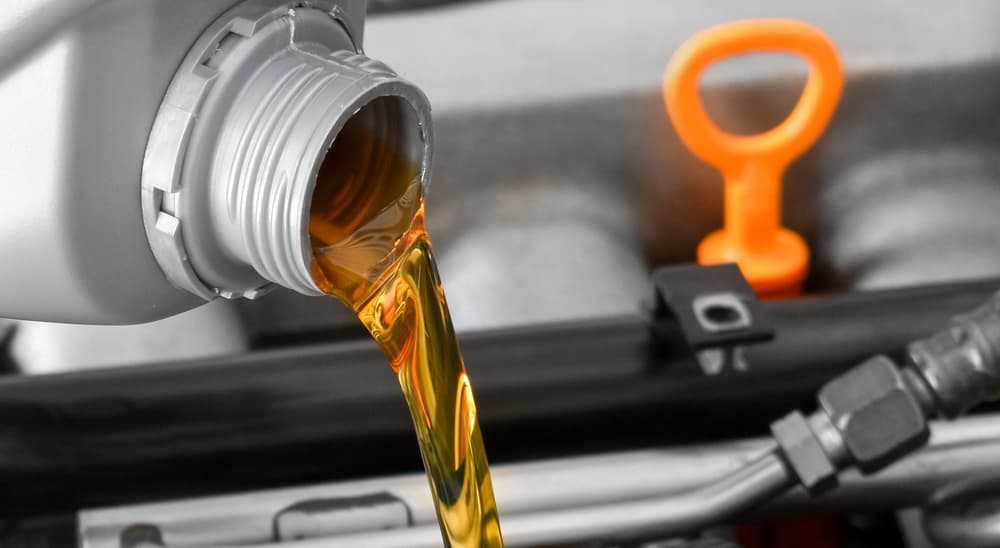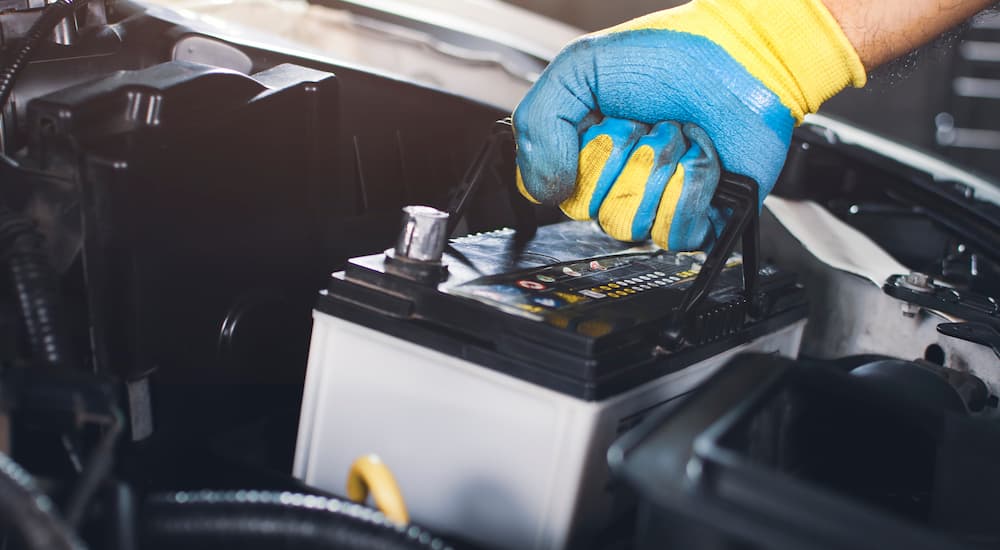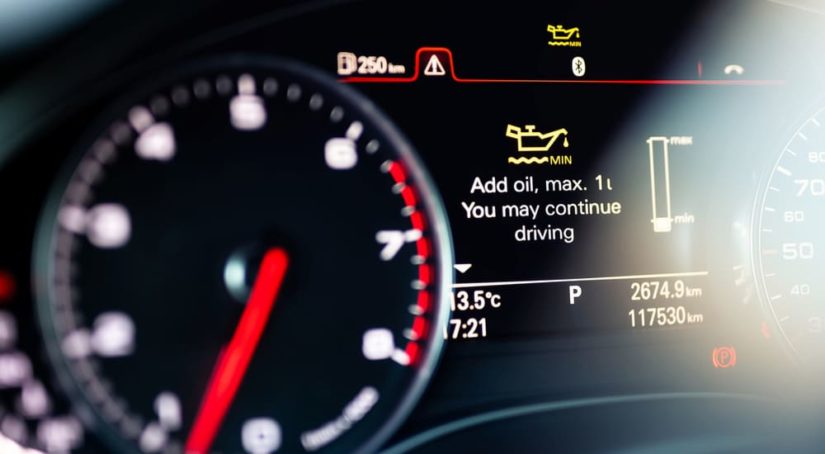After the long process of searching for the perfect vehicle, getting approved for financing, and going through the loan paperwork, as much of a relief as it might be to have the keys finally in hand, the fun has only begun. Owning a vehicle, whether it’s brand-new or new to you but pre-owned, requires more than just monthly payments and pit stops at the gas station to keep it on the road. Automobiles are machines constructed with a lot of moving parts that need regular maintenance to remain operational. Whether you’re taking care of it yourself or you’re trying to find a place that can do an oil change near you, it is still up to you to keep track of when your vehicle is due for service to keep it running as efficiently and safely as the day you brought it home.
Every vehicle’s recommended maintenance schedule is different. Most models today even have monitoring systems to alert you when the oil life is near its end or when you need to add air to the tires. However, some new and older vehicles might not have those luxuries and could need more frequent services than others, so familiarizing yourself with your vehicle’s manual is a must if you plan on doing the services yourself. Even if you’re planning on bringing it to a professional for most of its services, it’s good to have a general idea of the average timeline for the recommended maintenance so you can mark it on your calendar.
Regularly Monitor Your Vehicle
Generally speaking, you should continually monitor your vehicle for any vibrations and sounds that are out of the ordinary. If your vehicle starts to pull to one side or squeak when you tap the brakes, service is required. You should also keep a close eye on your windshield wipers, headlights, tail lights, fog lights, and turning signals to ensure they remain operational and replace them when needed. Tire pressure is also something you want to monitor regularly, checking it on the driver display or manually with a pressure gauge if your vehicle is not equipped with a Tire Pressure Monitoring System. Although you might not consider keeping your vehicle clean as a form of maintenance, a clean vehicle can retain its value better. Cleaning also helps prevent wear on the air filters from dirt and dust, corroded lines under the vehicle from salted winter roads, or clutter in the engine from leaves or other forms of debris.

Things to Check/Change Every Three Months
Fluid Level Check
Your vehicle’s fluids are required for essential operation. They should be visually inspected for coloring and consistency every three months and be topped off so they do not run dry. While each fluid might be a little different, when they become aged or polluted, the coloring becomes dark and murky, and the consistency thickens, making it hard for it to flow through the systems efficiently. Here are a few you should keep an eye on regularly:
- Engine oil is a necessary lubricant for proper engine function. If your engine runs low on oil, some of its components could seize up, resulting in expensive repairs or an engine replacement altogether.
- Windshield washer fluid is needed in conjunction with the windshield wipers to help you maintain visibility on the road by keeping the front windshield and, depending on the model, the rear window clear from exterior elements like dirt, snow, and rain.
- Engine coolant, also known as antifreeze, is what keeps your engine at the proper temperature. Without it, the engine’s cooling system could be damaged by corrosion year round, freeze in the winter, and overheat in the warmer months.
- Brake fluid is used with hydraulic brake systems to help deliver the braking force to all of the braking components to ensure your vehicle stops when the pedal is engaged. If this fluid runs low, it leaves room for air to flow through the lines leading to soft brakes and inefficient braking times.
- Transmission fluid is essential whether the vehicle has an automatic or manual transmission. It is a lubricant only for the transmission, which prevents rust, corrosion, and overheating.
- Power steering fluid is the hydraulic fluid that makes steering your vehicle as effortless as possible while simultaneously lubricating the steering system to keep it in good working order. As you can imagine, if your vehicle ran out of power steering fluid, you’d not only be struggling to turn the front wheels of your car, truck, or SUV, but the whole steering system would be at risk of potential damage.
Hose and Belt Inspection
As important as the fluids are for your vehicle’s operation, the hoses that transport those fluids and the belts that drive the systems the fluids are protecting are just as essential. The fuel, radiator, and power steering hoses should be routinely inspected for signs of age and damage, like bulges, cracks, and leaks. Your vehicle’s drive belt and timing belt (if equipped) should be checked for cracks, fraying, and a glazed appearance. If any of the hoses or belts at any time show signs of being aged, damaged, or appear to be leaking, replace them immediately.
Things to Check/Change Every Six Months
Oil Change and Filter Replacement
Whether you have conventional or synthetic oil, oil changes are done the same. Vehicles today, more frequently than not, are equipped with some sort of oil life monitoring system to help determine your vehicle’s engine oil life based on the mileage and driving conditions because how you drive and the environment play a large role in oil life. This system will notify you when service is due, similar to the check engine light. Generally, every six months, your vehicle should have an oil change and filter replacement done. If you don’t have one of these systems, check your owner’s manual for the recommended mileage between oil changes and stick to that schedule.
The oil should be fully drained from the oil pan underneath the engine and replaced with fresh oil at the top of the engine. The oil filter located on the side or the bottom of the oil pan should also be replaced since it traps any contaminants and debris from the circulated oil that gets pumped through it. The easier the oil can flow through the system, the more efficiently your engine will perform.
Air Filter Replacement
Engine air filters are used to trap debris like dirt, dust, and insects from the air going into the engine that it needs for the combustion process. Having a clean engine air filter can enhance fuel efficiency, increase acceleration, engine health and longevity, and lower emissions. If the filter does not get replaced when dirty, essentially, you will starve the engine of the air it needs to operate.
Cabin air filters are more common in vehicles today than in those produced before 2000. They are a part of the heating and cooling (HVAC) system that traps any contaminants in the air circulating through the cabin. This also needs to be routinely replaced since it is essentially cleaning the air you’ll be breathing while out on the road. So unless you prefer to breathe in pollen, dust, and other pollutants, you might not want to skip this task.

Battery Health
Essentially, your vehicle is going to either not start or stall on you if there’s an issue with its battery. You can help prevent being stranded or getting into an accident because your vehicle died on a busy highway just by checking the battery’s terminals for fraying, corrosion, and connectivity issues and by also inspecting the battery for any cracks, swelling, or leaks. Although electric and hybrid vehicle batteries are a different story, the average car battery will likely start to decline every four to five years. So if you do need to replace your battery, you could always write the date of installation on it for a visual reference in the future.
Tire Maintenance
The tread depth and wear on your vehicle’s tires should be inspected regularly since uneven wear is a sign of underlying issues and can be a safety concern. However, every six months, your tires should be inspected, rotated, and balanced to ensure even tread wear and safe tread depth to prolong the life of the tire and help your vehicle deliver optimal performance. Without this routine tire maintenance, you may need to replace the tires sooner than necessary and see a decrease in gas mileage or even traction.
Things to Check/Change Every Twelve Months
Brake Maintenance
If your brakes are faulty, you’re likely going to know about it. Whether your vehicle struggles to stop, you feel a vibration, or you hear a squealing sound when you engage the pedal, there’s a good chance you’ll know when something isn’t right with the braking system. However, it’s good practice to inspect the system regularly for preventative measures even if they feel and sound fine so that you don’t find yourself without stopping power when you need it most. You should look at the brake pads for wear, the rotors for warping, and check the brake lines for leaks.
Alignment
If you’ve ever had your vehicle pull to one side, you’ve experienced one of the tell-tale signs of your vehicle needing an alignment. Uneven tread wear and vibration while steering are also signs that your vehicle might be out of alignment and needs adjustment as soon as possible to prevent unnecessary tire damage and handling issues.
Your Vehicle’s Longevity Is In Your Control
No matter your vehicle’s make, model, or age, routine maintenance can help keep it running as safely and efficiently as possible. Most services can be performed by a professional if you prefer, but it is still up to you to make sure your vehicle makes it for its recommended services on time. One vehicle’s recommended maintenance schedule will likely be different from another model’s, but for peace of mind, you should get in the habit of visually and audibly inspecting your vehicle every day for anything unusual and have it serviced at least every three, six, and twelve months.



